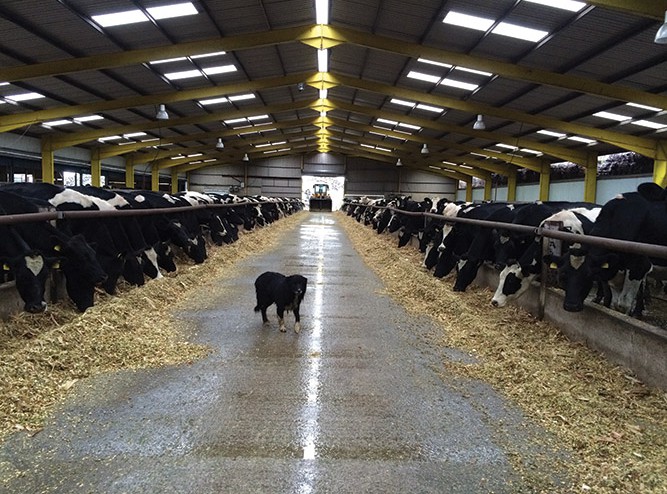
The abolition of the milk quota after 31 years in early April this year was met by delight by many of the 18,000 dairy farmers in Ireland.
Milk supply is expected to increase by 50 per cent by 2020, and the dairy herd to increase by about 300,000 cows. It has also been estimated that at least 10,000 jobs could be generated on farms and in businesses working with farmers.
Milk quotas were introduced to address the structural oversupply on the EU market of the late 1970s and early 1980s that had led to the infamous milk lakes and “butter mountains”. EU dairy farmers were guaranteed a price for their milk (considerably higher than on world markets) regardless of market demand.
Despite different efforts in the 1970s to slow down EU production, it continued to rise much faster than domestic demand. The system was also having a negative impact on world market prices, as the EU frequently subsidised exports on to the world market.
In July 1983, the European Commission proposed to introduce milk quotas, and this was agreed by the Council on March 31, 1984. The regime required a quota being fixed for each individual producer or purchaser, with a levy (“superlevy”) payable for those who exceed their quota. Subsequent changes have meant producers only have to pay the levy when the Member State also exceeds its national quota.
Despite, entering a new era in dairy farming, there are those who are urging caution. One such person is one of Ireland’s biggest dairy farmers, Cork based Tom Browne.
Over the last eight years, Tom and his son Simon have doubled their herd size and are now milking up to 850 cows on a daily basis.
Tom has worked hard over the years and took over the family farm after his parents moved to Killeagh in 1945. From a herd of 15 cows, the Browne family steadily grew the herd and when Tom finally took over in 1975, they were milking 200 cows.
With no milk quota in place, Tom and his wife Betty soon grew the herd to 300 cows and as the herd grew so too did the amount of land that they were farming.
These days with a herd of 850 cows, Tom is better placed than most dairy farmers to reveal the drawbacks that the abolishing of the milk quota may bring.
“I see a great future in dairy farming, but with opportunity comes risk,” stressed Tom. “More cows doesn’t always mean more money. We learned some hard lessons in the 1980s when interest rates hit over 20%.
“My advice is to borrow over a long enough term, put a reserve cash fund aside as a safety net and budget for increased volatility. Careful planning is needed for successful business growth.”
Tom’s words should be heeded as you cannot beat experience when it comes to making business decisions.
During the early eighties, Tom opted to diversify totally from dairy farming to tillage, but a return to dairy farming was made by the end of the decade.
These days, Greenhill Dairies (the business name of the family run farm) farm in the region of 486 hectares, some of which is leased, but the majority is owned by the family.
“We would have land up to 24 miles away from the home place. Sixty hectares of maize is grown every year to help produce enough winter feed for all stock. Most of this is grown around nine miles away from the home yard, with the furthest maize ground being 24 miles away.”
A 60-unit Dairymaster rotary parlour was installed in 2000 and was the first of its kind in Ireland. “We keep all machinery well maintained and invest in new machinery when we can and we would do all our own silage and slurry work throughout the year,” added Simon.
Both Tom and Simon are very hands-on in the business and Tom’s nephew Michael Browne takes charge of the machinery. There are four other full-time staff working on the farm. Simon is a trained accountant and worked for three years with FDC before returning home to farm three years ago.
“We have been aggressively growing the herd over the last number of years and so did very little culling. Now that we have reached peak numbers, we will try to reduce the calving spread,” added Simon.
Farming on such a large scale means there are many areas that have to be covered. “Over the years, the Browne’s have learned that it’s best that one person takes full responsibility for treatment records etc. Stock are vaccinated for all the major diseases as any outbreak on a farm of this scale could have devastating results. An auto-fill footbath is used daily by the herd and regular hoof paring helps prevent lameness. Cow welfare is a major farm priority for us.”
So what does the future hold for Greenhill Dairies? “Intensifying this business further would probably be very small-margin work as the extra cows would be nearly completely fed on imported feed. With 820 cows, any improvement in efficiency can pay back hugely. While we have scale, the business has borrowed and invested a lot to get where we are today. We will consolidate for now.”
Greenhill Dairies
Knocknagappagh,
Killeagh,
Co Cork.
Taken from Irish Tractor & Agri magazine Vol 3 No 5, June 2015